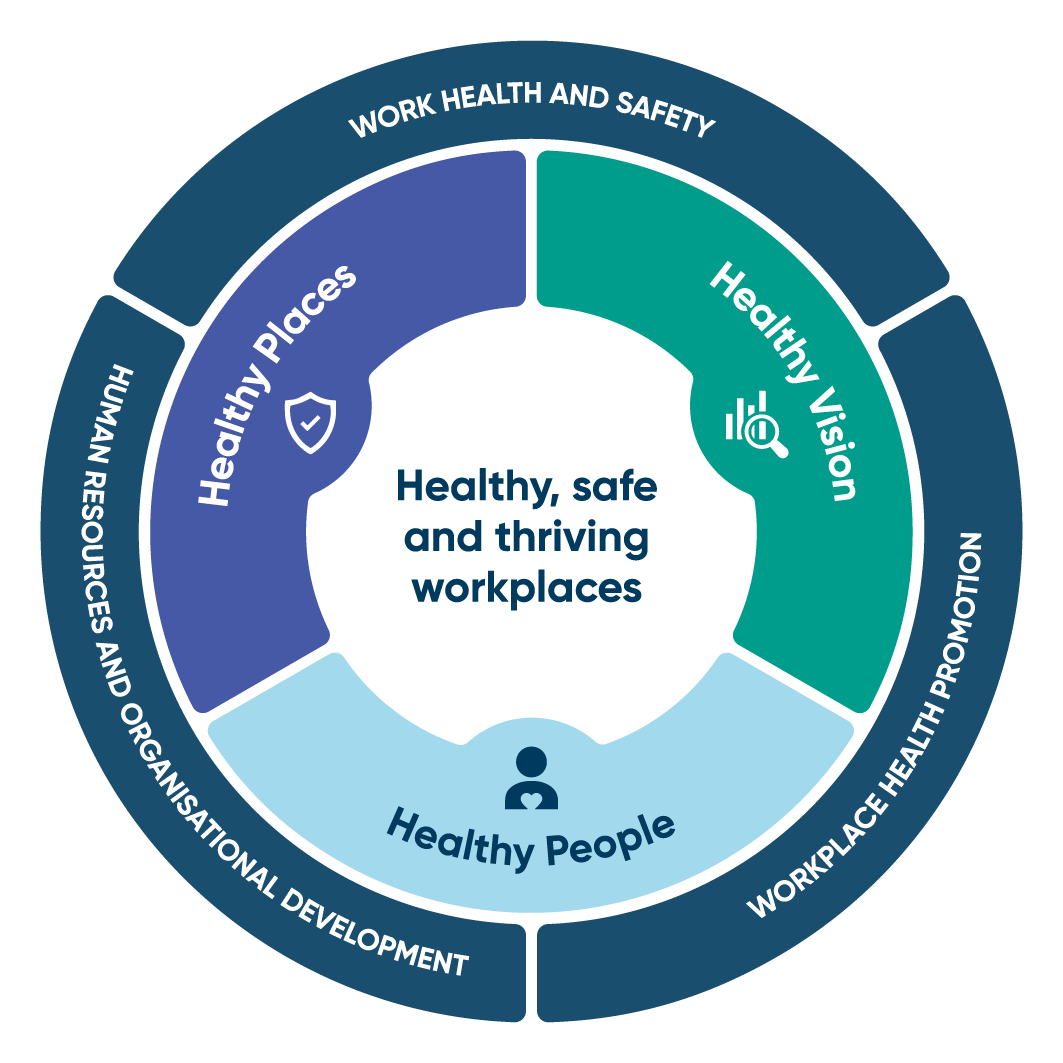
The Healthy Workplace Model promotes an integrated approach to workplace health, safety, and wellbeing where work health and safety, human resources, and health promotion all work together.
These are supported by a mix of strategies that incorporate policies, programs, and practices for workplaces, physical environments, and people.
![]()
Healthy vision
Strategies address cultural perceptions and commitment from management and encourage workplaces to consider how usual practice might support and promote health and wellbeing.
![]()
Healthy places
Strategies address the environmental factors that negatively impact worker health and actively encourage positive health and wellbeing.
![]()
Healthy people
Strategies focus on individual needs, such as improving access to services and information, improving people’s health knowledge and skills, and supporting people to engage in healthy behaviours.
![]()
Health promotion
The workplace has been recognised as ‘one of the priority settings for health promotion into the 21st century’ as it ‘directly influences the physical, mental, economic and social well-being of workers and in turn the health of their families, communities and society’.1 Workplace health promotion places particular emphasis on improving the work organisation and working environment, increasing workers’ participation in shaping the working environment, and encouraging personal skills and professional development. These links recognise the determinants of health, individuals change in health, behaviour change, and that the workplace provides access to more opportunities to promote health and emotional wellbeing and prevent disease and injury.2
![]()
Health and safety
Health and Safety relates to protecting and preventing harm in accordance with workplace health and safety legislation. A person conducting a business or undertaking (PCBU) has a primary duty to ensure, as far as reasonably practicable, that the health and safety of their workers is not put at risk.
Employees have a legal responsibility to maintain their own health and safety and not place others at risk.3
![]()
Human resources
A core function of human resources is to identify ways to enhance employee wellbeing by linking it to key outcomes such as performance and productivity, job satisfaction, and employee retention. Factors to consider:
- fostering positive workplace relationships and connection
- promoting diversity and inclusion
- improving workplace culture and engagement
- providing training, job crafting and development opportunities
- ensuring leaders have the appropriate skills and approach.4
1 World Health Organization, Healthy workplaces: a model for action: for employers, workers, policymakers and practitioners, WHO, 2010.
2 ST Innstrand, M Christensen, The Workplace as a setting: Health Promotion in the Workplace, European Journal of Public Health, 2015, 25(3)
3 SafeWork SA, Healthy workers and workplaces, SafeWork SA, n.d., accessed August 2022.
4 THP Kowalski, W Loretto, Well-being and HRM in the changing workplace, The International Journal of Human Resource Management, 2017, 28:16, 2229-2255; K Nielsen, MB Nielsen, C Ogbonnaya, M Känsälä, E Saari, K Isaksson, Workplace resources to improve both employee well-being and performance: A systematic review and meta-analysis, Work & Stress, 2017, 31:2, 101-120.


